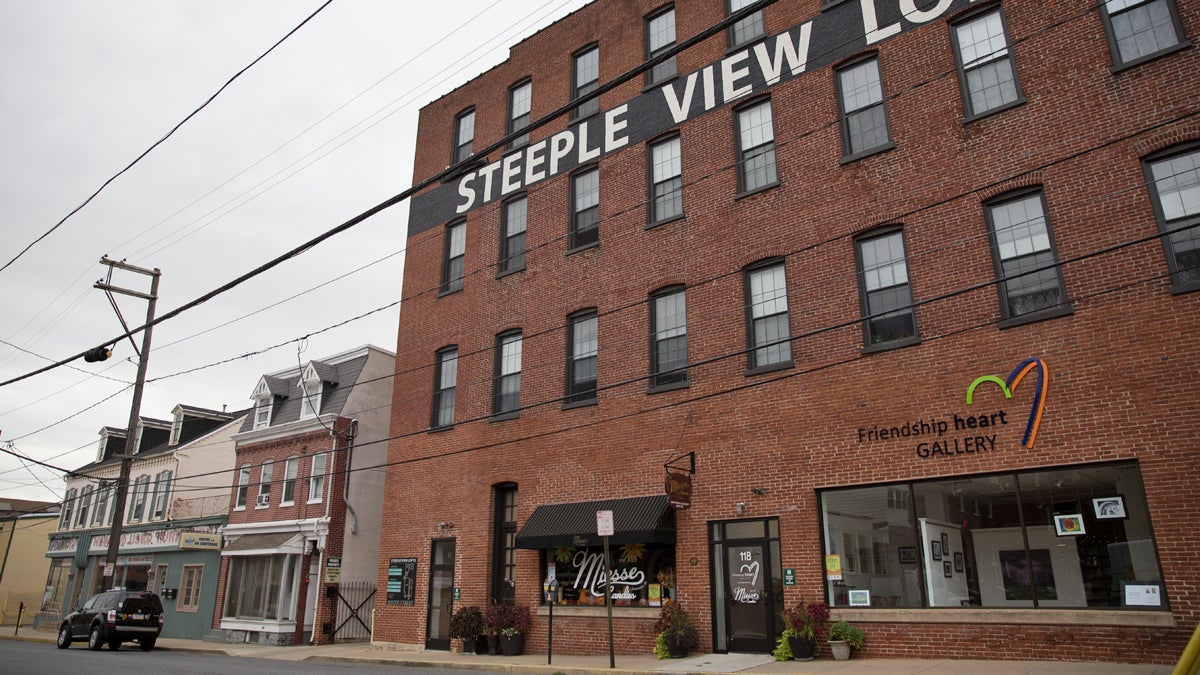Changing demand, same supply: Housing in Lancaster

The Steeple View Lofts on Water Street in downtown Lancaster is designed for residents 55 years old and older. (Lindsay Lazarski/WHYY)
Lancaster is struggling to adapt its housing stock to changing needs.
When an Urban Outfitters warehouse opened near Gap, a town in Lancaster County, it created jobs for hundreds of people. The problem?
“There’s no housing in that area,” says Ray D’Agostino, the executive director of the Lancaster Housing Opportunity Partnership. “So, they’ll build transit to bring people in from the surrounding areas, including outside the county.”
Lancaster is the second-fastest growing county in the state, and it’s experiencing some growing pains. Occupancy rates in the county are at 95 percent and some residents struggle to find the type of housing that meets their needs.
Multi-family homes
“We have the two biggest age cohorts converging here,” says D’Agostino. “Baby boomers who are getting older and want to downsize, and young people who don’t want to or can’t afford to buy a house.”
Those demographics are made up of people who want to live in reasonably priced apartments. But Lancaster has mostly single-family homes, built before the housing bubble popped in 2008. Even now that apartments are in high-demand, construction of single-family homes continues to outpace them.
Richard Jackson of the Building Industry Association of Lancaster says this mismatch is going to hurt Lancaster badly.
“If we don’t get this right, high-school, trade-school and college graduates, who are essential to replacing our aging workforce, will be unable to find affordable places to live or to save to buy their first houses,” wrote Jackson in an op-ed for Lancaster Online.
Graduates will be forced to find housing further out from job sources, which increases transportation costs. If the cost of housing continues to rise, it can discourage people from coming to Lancaster despite job opportunities.
“If young people move elsewhere so they can rent and save money, they’re not moving back when it’s time to buy a house,” says D’Agostino. “So our existing housing stock isn’t going to be very useful over time either.”
Low-income housing
Convincing municipalities to develop multi-family homes is a challenge, and requires overcoming stigma about who lives in apartment complexes, says Jackson. It’s those same stigmas that prevent low-income apartment units from being developed in Lancaster.
“Too often,” he writes, “we buy into certain myths, among them that affordable and rental housing decreases the property value of nearby homes, increases rates of crime and increases traffic and the number of school-age children.”
Poverty experts say that housing becomes unaffordable when it costs more than 30 percent of your income. In the city of Lancaster, 61 percent of renters exceed that mark according to a August 2015 report by Franklin & Marshall College. That’s hard for the renters, and it’s bad for the city’s economy.
“If people are pumping half of their income into housing and transportation costs, that’s money they’re not spending on goods and services in Lancaster,” says D’Agostino. “That’s millions of dollars each year that could be reinvested in the community.”
D’Agostino says there has been some progress made recently to build low-income housing in the county. But it’s not keeping pace with demand.
“One of the first things a company seeking to expand its operations looks for is adequate housing for its workforce,” says Jeff Peters, the president of the Lancaster County Association of Realtors, in an op-ed for Lancaster Online. “When a new business opens or a new hospital is built, we need housing for every income level those businesses pay.”
Changing times
In 2013, the Lancaster Housing Opportunity Partnership conducted a housing market analysis. The study determined that Lancaster was continuing to build large, single-family homes, a move that was “out of step with the changing housing preferences of the 21st century housing market.”
D’Agostino says that the Partnership has seen many of those trends continue over the past few years, but there are important conversations happening on a municipal level. It’ll take input from residents, non-profits and the private sector to create housing that meets the needs of a changing Lancaster…or else.
“Businesses will go where they can find employees, and if no one can afford to live here…” D’Agostino said. “There’s no value in having jobs if there’s no one to work them.”
WHYY is your source for fact-based, in-depth journalism and information. As a nonprofit organization, we rely on financial support from readers like you. Please give today.



